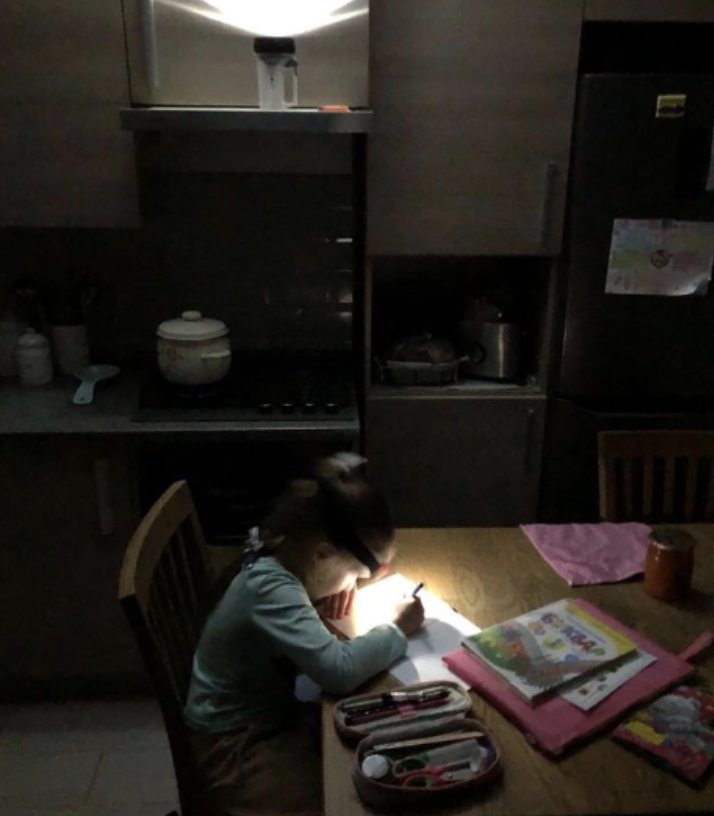Going Back To School
A six-year old girl in Ukraine does her homework during a power outage. Power outages like these are frequent due to the Russian army’s attacks on infrastructure.
For many students, school can provide a sense of normalcy during unprecedented times. During the pandemic, having a list of assignments to do helped me stay grounded and stay sane. I can only hope that going to school is just as calming for the nearly four million children who returned to school in Ukraine this September.
Since many schools don’t have adequate bomb shelters, most students are studying online. That can be difficult with attacks on infrastructure, power outages, and spotty internet. This is still safer than the alternative, since an average of four preschools a day are damaged or destroyed by Putin’s war.
In Kharkiv, the second largest city in Ukraine, at least 40 schools have been damaged. Because Kharkiv is so close to Russia, there is little time to shelter between an air-raid siren and an explosion. This makes it even more difficult for school to resume, because moving a large group of children into a shelter takes time.
Playground are being bombed, too. In Kyiv, a missile from Russia hit a playground just two months ago. This centerpiece of play and friendship for kids has been destroyed, but so many other bad things are happening around them that losing their playground doesn’t bother them that much. In an interview, nine-year old Askold admits that he was emotionally hurt by the explosion, but tells the interviewer that he isn’t afraid because Ukrainians are never afraid. He explains that he’s seen scarier things like shot-through buildings and churches in Bucha.
Just like we have lessons in school about drug use or refusal skills, children in Ukraine are being taught how to respond to air raid sirens, and where to hide. However, there’s a difference in the necessity of such lessons. While we may not all be offered deadly substances on a daily basis, even the parts of Ukraine farthest from the front lines hear air-raid sirens go off almost every single day. There are videos all over the internet of Ukrainian children singing the Ukrainian national anthem in bomb shelters. These children have no idea what will happen next, and who the bombs could hit, but they have no choice but to keep living their lives.
The resilience shown in these videos is a testament to the trauma impacting up to five million Ukrainian children. I can’t imagine any good ways for a little kid to cope when there is so much violence going on around them. Some students turn to art - according to teachers in Kharkiv, drawings are increasingly violent during art class. This coping mechanism is championed by Canada-based foundation Kids Create Ukraine, which collects art supplies to “bring the healing power of art to [Ukrainian] children”. Recently, they posted a video of a little girl explaining her drawing. At first, it looks like a typical pretty picture of a castle and some unicorns. Then she points out the rocket flying into the roof, the shards of broken glass, the flames, the fire extinguishers, and even the little protective bubbles she drew around the unicorns. This girl, like many other people in Ukraine, has become so accustomed to living in a war zone since February that even the pretty pictures she draws take place in one.
Whatever their coping mechanisms are, the psychological impacts of the war are scarring Ukraine’s children forever. As tragic as it is, the condition of children in Ukraine right now is only indicative of the levels of trauma impacting Ukrainian society as a whole. Will these Ukrainian children be able to heal from the scars of war when the war keeps continuing? The future of Ukraine depends on it.
by VERONIKA MOROZ
